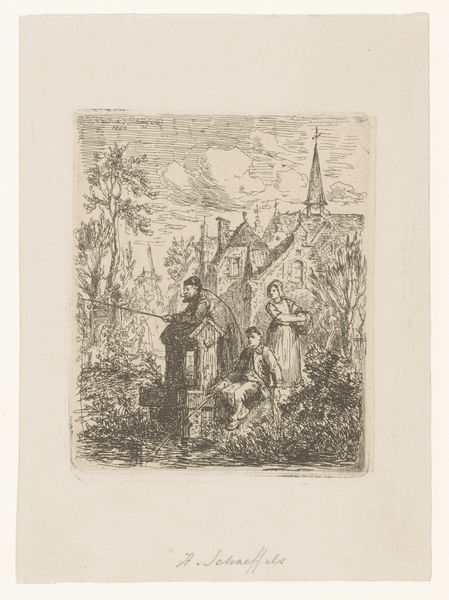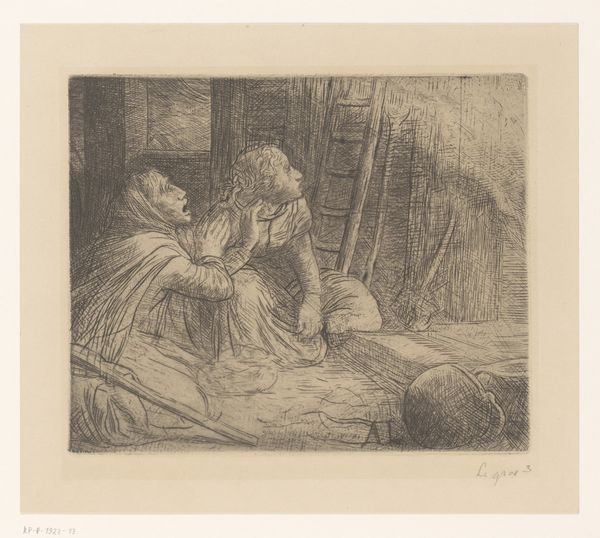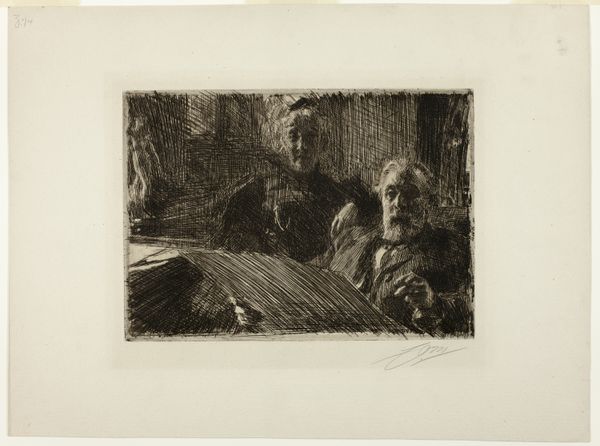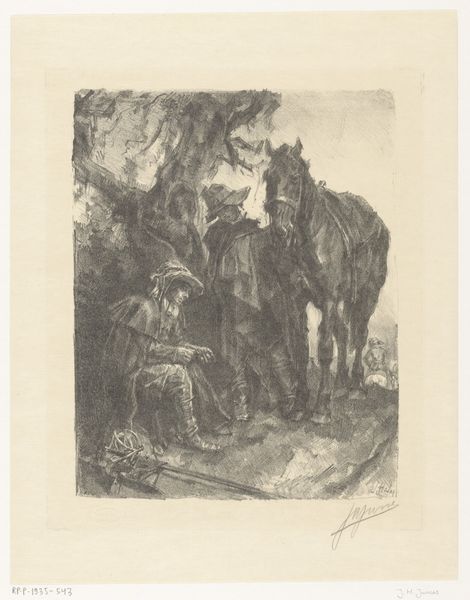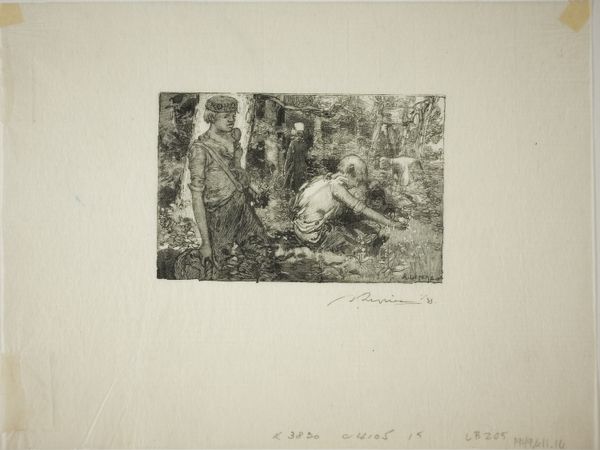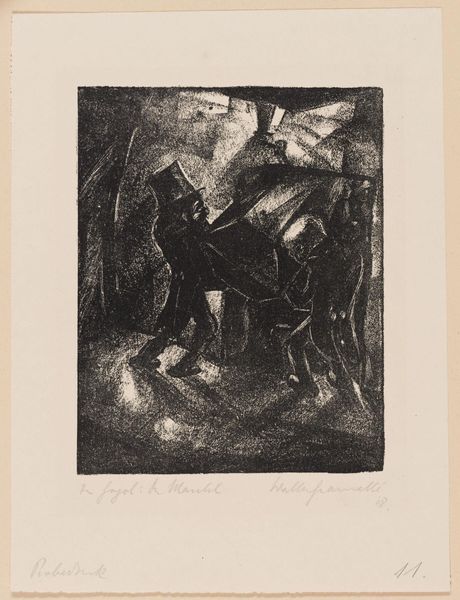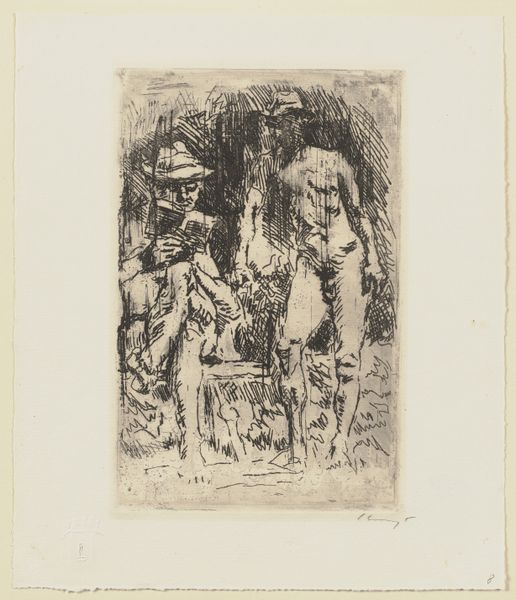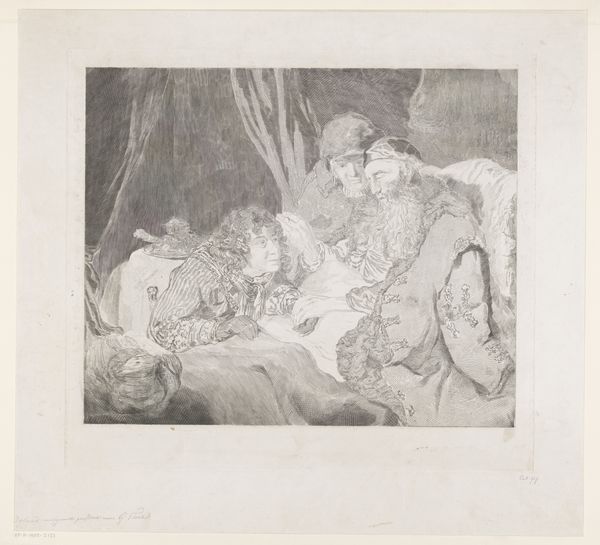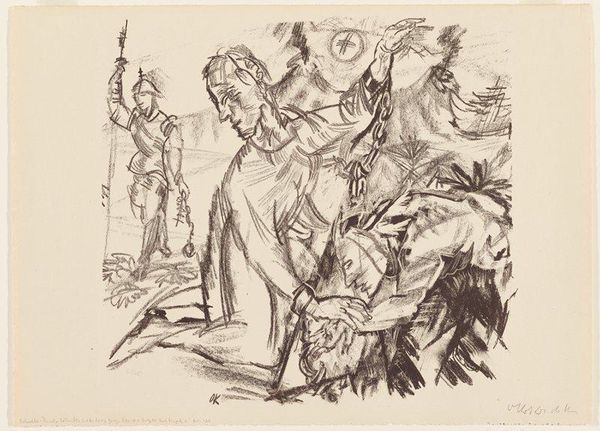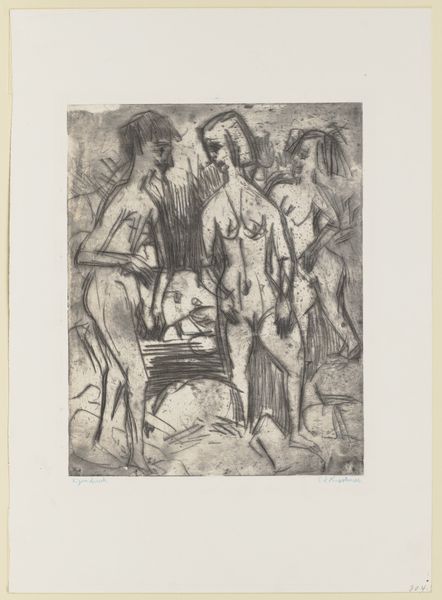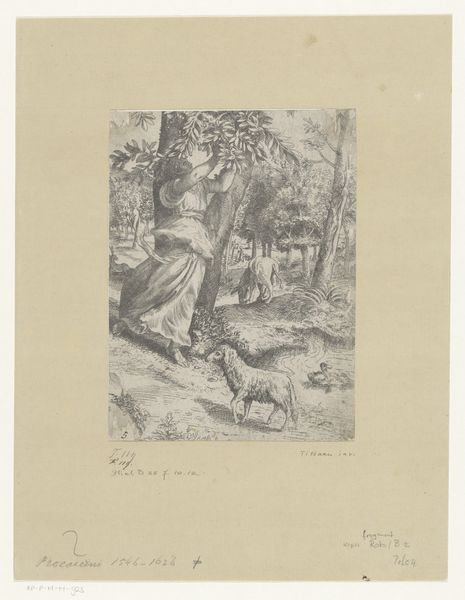
drawing, print, etching, ink
#
portrait
#
drawing
# print
#
pen illustration
#
etching
#
pencil sketch
#
figuration
#
ink
#
orientalism
#
genre-painting
Dimensions: height 216 mm, width 200 mm
Copyright: Rijks Museum: Open Domain
Curator: This is Adolphe Marie Timothée Beaufrère's "Arabisch Gezelschap," created in 1929. It's an etching, showcasing a gathering of figures rendered with remarkable detail using ink. Editor: The first thing that strikes me is how densely packed the figures are. It almost feels claustrophobic, a closed social circle depicted using such fine, delicate lines. What mood does that evoke for you, from a materialist point of view? Curator: For me, it highlights the printing process itself, the labor involved in creating such detail on the plate. And then think of the dispersal—each print pulled disseminates this image, allowing for the “Orientalist” fantasy to reach a wider audience. How do you see that impacting viewers in 1929? Editor: Considering the rise of colonialism during that period, this image reinforces power dynamics. It’s about looking *at*, not engaging with, another culture, distilling them into a simple representation. It simplifies and almost exoticizes, right? Curator: Indeed. The medium of print itself lent itself to such mass-produced views. But notice the details of clothing—the robes, head coverings. It feels studied. What social and gender roles might be at play here, with such variation in their attire? Editor: That's precisely the tension. The variations in clothing, while seemingly accurate, solidify specific roles within a colonized context. They are figures to be observed and categorized, perpetuating the idea of the "Other." But perhaps even beyond its role in that era, how does such an image resonate now? Curator: Today, we can analyze how printmaking as a medium contributed to the creation and perpetuation of these stereotypical representations, while also valuing the craft involved in each individual piece. There's inherent tension there. Editor: Exactly. We're now tasked with interrogating its place within the broader narrative of art and its social responsibilities, which also requires us to acknowledge art’s impact both when it was originally created and now. It invites continuous conversation.
Comments
No comments
Be the first to comment and join the conversation on the ultimate creative platform.
